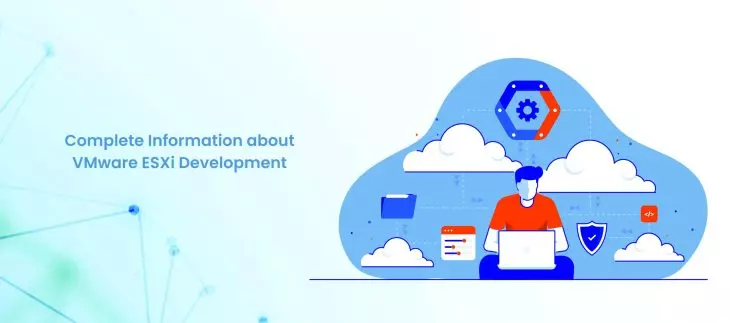
VMware ESXi development is among one the most demanded cloud technologies.
VMware ESXi development is among the currently hot and trending technologies. In this article, we will guide you through complete information about VMware ESXi and VMware ESXi development.
Let’s dive deep into this topic more by understanding VMware ESXi.
VMware ESXi is also known as VMware ESXi server. VMware ESXi is a bare metal hypervisor. Its development took place by VMware for vSphere. In general, ESXi is considered among VMware infrastructure’s primary components.
VMware ESXi development directly runs on system hardware and it replaces the requirement for an OS.
The target market for VMware ESXi development is individuals, enterprises, and small organizations.
1. Features of VMware ESXi
Now, let’s look at the major features that VMware ESXi comes with.
Being a primary component of the vSphere, ESXi consists development of these features that are mentioned below.
- VMware ESXi involves traffic shaping.
- It comes with memory ballooning.
- Also, ESXi offers access to role-based security.
- There is an option for auditing and logging.
- It comes with a GUI.
- ESXi development holds the configuration till 768 processor cores.
- Instead of using the command-line interface, VMware ESXi development comes with architecture that is lightweight and comprises a small codebase.
All the above-mentioned factors help in a quick installation procedure and lower the chances of an attack surface.
2. History of ESXi Versions
Now, you have a basic idea about VMware ESXi and VMware ESXi development, let’s look at the ESXi version history.
Earlier, VMware provided the ESX hypervisor before the release of ESXi.
But, the problem with the ESX was that it comprises many parts including a firewall and console OS.
ESXi was released in 2010 after the VMware ESX 4.1 version. The current version of VMware ESXi is 7.0.
ESXi got continued support. The license for the ESXi host was based on the permits of vSphere and each license of vSphere held a specific capacity for licensing multiple physical CPUs on ESXi hosts.
For vSphere 7.0, a CPU license comes with the coverage of one CPU with up to 32 cores. CPUs that hold the need of more than 32 cores require additional CPU licenses.
Then, later versions of ESXi were separated and classified based on the CPU numbers. For licensing an ESXi host, users must choose a license of vSphere with the capacity to tackle the number of physical CPUs; also the license should support all the features that are used by the host.
3. Benefits and Drawbacks of VMware ESXi
Now, let’s have a look at the benefits and drawbacks that VMware ESXi comes with. The advantage and disadvantages of VMware ESXi are mentioned below.
3.1 Benefits of VMware ESXi
- The installation of ESXi in the data center is fast and simple due to its property of lightweight footprint.
- The lightweight format of ESXi needs lesser patches.
- ESXi is more secure due to less attack surface.
- VMware ESXi provides a simplified GUI.
3.2 Drawbacks of VMware ESXi
- VMware ESXi consists of fewer configuration files to keep maintenance of its size.
- For those who didn’t use a virtualization product, there is a learning curve for them as well.
- It reduces performance.
- ESXi comes with limited CPUs.
4. Conclusion
Are you looking for VMware ESXi development services and can’t find the best company to make it happen for you?
Then, our company “Take2 Technologies” is the right place that offers top-notch VMware ESXi development services.
We are the leading service agency with years of expertise and experience in VMware ESXi development.
Our team is dedicated and well-versed in cloud technologies to bring out the best solutions for clients and customers. We offer VMware ESXi development services at the global level and made an impact in the field of cloud technologies.
If you are searching for the best services in VMware ESXi then connect with us to know more and resolve your queries.
To get the latest updates, follow us on Linkedin.
https://in.linkedin.com/company/take-2-technologies
To know more updates about the latest technologies, check out our blog section at